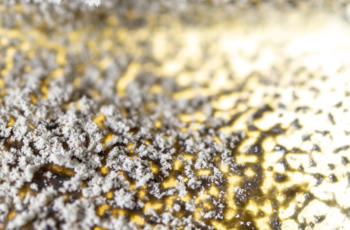Can novel microbes do our dirty work?
Posted on October 3, 2012 by Zoe Freeman, University of Bath
Across the globe, teams of intrepid microbiologists are tirelessly sampling and characterising microbes from strange and exotic lands. Just imagine isolating a new yeast species from Hibiscus flowers in Borneo, or a new bacterium from the sediment of an Arctic lake… Okay, it’s not always that glamorous – another novel bacterium was found on a mouldy indoor wall and a considerable number are from hazardous waste sites. Don’t underestimate these microbes based on their humble origins though! Sometimes organisms flourish in challenging environments for a simple reason – they can utilise unusual substrates as an energy source. That means they might be useful for bioremediation – the use of microbes to safely degrade harmful chemicals into water and harmless gases.

Bioremediation can often be used to clean up contaminated soil and groundwater in situ at hazardous sites. As described in the International Journal of Systematic and Evolutionary Microbiology (IJSEM), one novel bacterium was recently discovered at a site heavily polluted with chlorinated alkanes and alkenes from dumped petrochemical waste in Louisiana, USA.
Chlorinated hydrocarbon contaminants have toxic effects on plants and animals alike, and from the groundwater they can potentially leach into local drinking water supplies. Contaminated water from the Louisiana site killed 30 cattle on nearby ranch-land.
Researchers investigated the site’s microbial flora using next-generation genetic sequencing and discovered that around 8% was comprised of a novel bacterial species. Phylogenetic analysis revealed it to be a new member of the Chloroflexi phylum, most closely related to the brilliantly named Dehalogenimonas lykanthroporepellens (‘werewolf repeller’). The novel species is only the second member of the genus and has been named Dehalogenimonas alkenigignens.
As the genus name suggests, Dehalogenimonas species are able to remove chlorine halogen groups from hydrocarbon compounds, which – with a few exceptions – makes them less toxic. The researchers probed the ability of the new species to de-halogenate various chlorinated alkanes, alkenes and benzenes; just like D. lykanthroporepellens, D. alkenigignenscould de-chlorinate alkanes. In fact, it thrived – the bacterial concentration was up to 52 times greater when it was supplied with chlorinated alkanes than without. So could D. alkenigignens be an interesting candidate for bioremediation? One drawback is that its de-halogenation activity did not extend to alkenes; in fact from trichloroethane it produced the chloro-alkene vinyl chloride (VC), which itself is highly toxic, flammable and carcinogenic. However, for bioremediation purposes a cocktail of different microbes could conceivably work together. Perhaps the Dehalogenimonas species could clean up chloro-alkanes and other species could clean up where they leave off – for instance species of the closely related Dehalococcoides genus can de-halogenate chloro-ethenes including VC.
Undoubtedly the world’s toxic waste sites harbour countless unknown microbes, with plenty of biotechnology potential waiting to be discovered. So, while a sampling trip to Borneo does sound great, you never know what you might find while poking about in some sludge!
